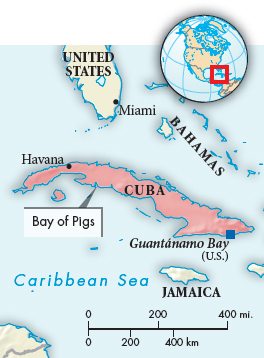Understanding World Societies:
Printed Page 980
Communist Revolution in Cuba
Cuba remained practically an American colony until the 1930s, when a series of rulers with socialist and Communist leanings seized and lost power. Cuba’s political institutions were weak and its politicians corrupt. In March 1952 Fulgencio Batista (1901–

The Cuban Revolution led by Fidel Castro (b. 1927) began in 1953 and finally overthrew the Cuban government on New Year’s Day 1959. Castro had not come to power as a Communist: his main aim had been to regain control of Cuba’s economy and politics from the United States. But U.S. efforts to overthrow him and to starve the Cuban economy drove him to form an alliance with the Soviet Union, which agreed to place nuclear missiles in Cuba to protect against another U.S. invasion. When President John F. Kennedy demanded the missiles be removed, the military and diplomatic brinksmanship of the 1962 Cuban missile crisis ensued. In 1963 the United States placed a complete commercial and diplomatic embargo on Cuba that has remained in place ever since.
Castro now declared himself a Marxist-
>QUICK REVIEW
What groups in Latin American society found the populist message appealing? What groups were most actively opposed to the implementation of the populist agenda?